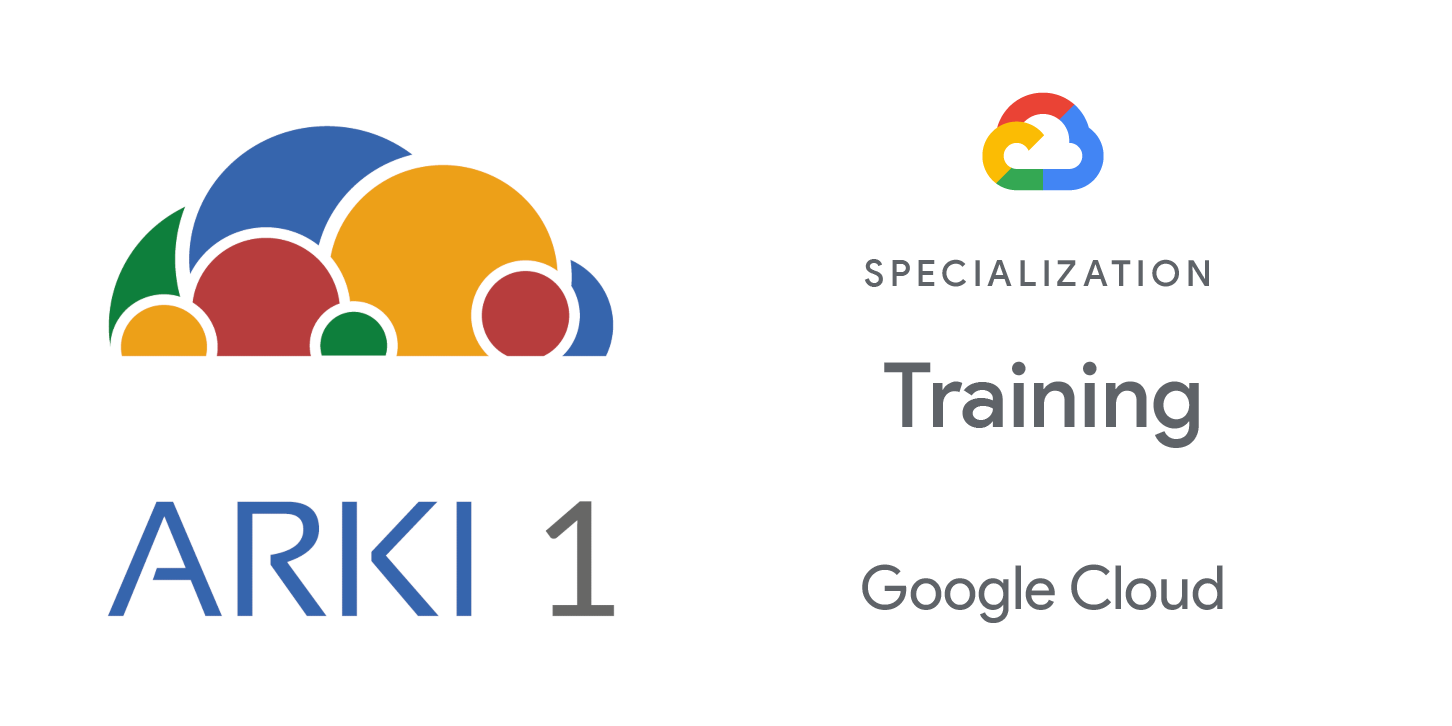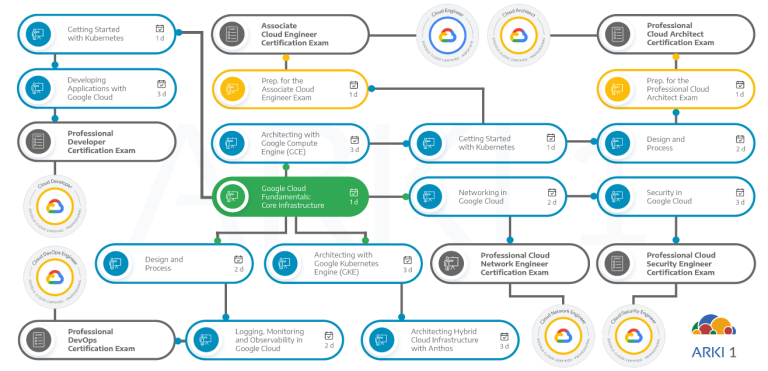Learn about, and compare, many of the computing and storage services available in Google Cloud, including Google App Engine, Google Compute Engine, Google Kubernetes Engine, Google Cloud Storage, Google Cloud SQL, and BigQuery.
You learn about important resource and policy management tools, such as the Google Cloud Resource Manager hierarchy and Google Cloud Identity and Access Management.
Objectives
In this course, participants will learn the following skills:
- Identify the purpose and value of Google Cloud products and services.
- Choose among and use application deployment environments on Google Cloud: App Engine, Google Kubernetes Engine, and Compute Engine.
- Choose among and use Google Cloud storage options: Cloud Storage, Cloud SQL, Cloud Bigtable, and Firestore.
- Interact with Google Cloud services.
- Describe ways in which customers have used Google Cloud
Audience
This class is aimed at the following audience:
- Individuals planning to deploy applications and create application environments on Google Cloud;
- Developers, systems operations professionals, and solution architects getting started with Google Cloud;
- Executives and business decision makers evaluating the potential of Google Cloud to address their business needs.
Prerrequisites
To get the most out of this course, participants should:
- Familiarity with application development, systems operations, Linux operating systems, and data analytics or machine learning is helpful in understanding the technologies covered.
Duration
8 hours
Investment
Check the next open public class in our enrollment page.
If you are interested in a private training class for your company, contact us.
The course includes presentations, demonstrations, and hands-on labs.
- Identify the advantages of Google Cloud.
- Define the components of Google’s network infrastructure, including: Points of
presence, data centers, regions, and zones. - Classify the difference between Infrastructure-as-a-Service (IaaS) and Platformas-a-Service (PaaS).
- Identify the purpose of projects on Google Cloud.
- Define the purpose of and use cases for IAM.
- List interaction methods with Google Cloud.
- Use Cloud Marketplace to interact with Google Cloud.
- Explore the basics of networking in Google Cloud.
- Identify the purpose of and use cases for Google Compute Engine.
- Outline how Compute Engine can scale.
- Detail important VPC compatibilities including routing tables, firewalls, and VPC peering.
- Explore how Cloud Load Balancing functions in Google Cloud.
- Deploy a basic infrastructure to Google Cloud.
- Identify the purpose of and use cases for Cloud Storage.
- Distinguish between Cloud Storage classes.
- Distinguish between Google Cloud’s database storage options.
- Deploy an application that uses Cloud SQL and Cloud Storage.
- Define the concept of a container and identify uses for containers.
- Identify the purpose of and use cases for Kubernetes and Google Kubernetes Engine.
- Identify the purpose and use cases for Cloud Run.
- Describe how Cloud Functions can support application development on Google Cloud.
- Deploy a containerized application on Cloud Run.
- Describe how Cloud Source Repositories and Cloud Functions can support
application development on Google Cloud. - Explain how template-based creation and management of resources leverages
a template to produce efficient app deployment and management.
- Define SLIs, SLOs, and SLAs.
- Identify the purpose of integrated monitoring, alerting, and debugging.


